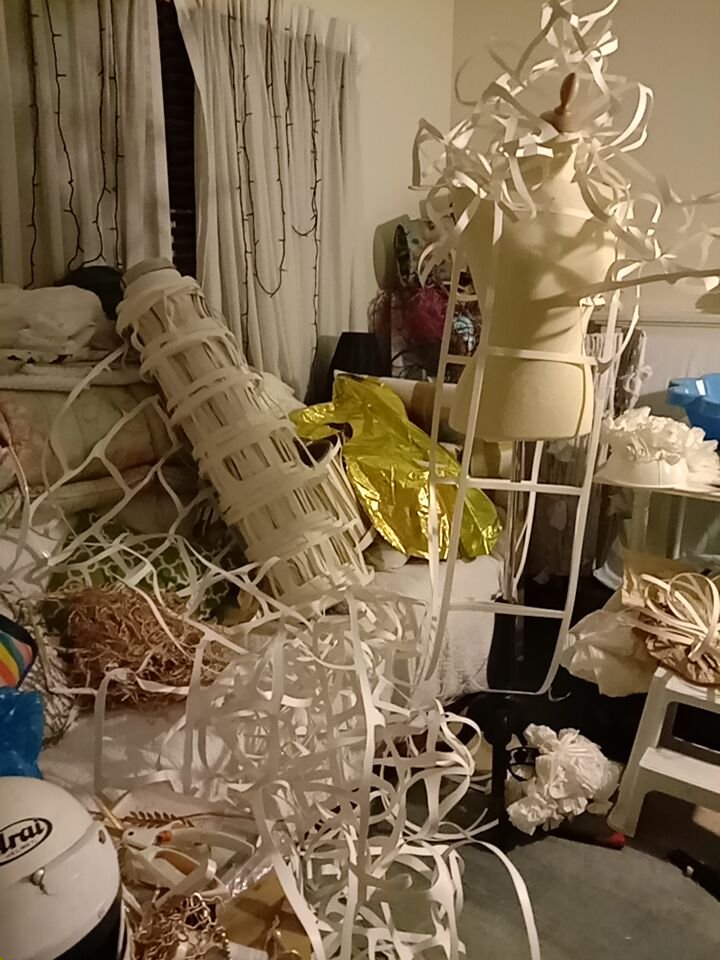Sally Baldwin works across a variety of textile processes and materials to create work about the environment. She focuses primarily on botanical structures, and wherever possible uses sustainably produced materials including reused paper, handmade paper and waste silk fibres.
Sally’s work has been exhibited in the UK and internationally. She has undertaken two arts residencies in Australia and received numerous awards. In 2004 Sally sold work to Alexander McQueen as ‘inspirational samples’, and was invited to visit Christian Lacroix Design Studios in Paris to show her work.
Lost Flowers is an addition to Sally’s Fragile Earth series. She has become increasingly alarmed at the rate at which we are losing our biodiversity due to habitat loss and climate change. The garment highlights the loss of native flowers as the climate heats up. The flowers are densely stitched at the top of the cloak, continuing over the torso and thinning out to nothing by the hem line and train at the back.
Lost Flowers features a technique Sally has developed of stitching and deconstructing paper to create ‘paper lace’.
Materials: Cartridge paper, wire, pulp.
Sally Baldwin website https://www.sallybaldwin.co.uk/




